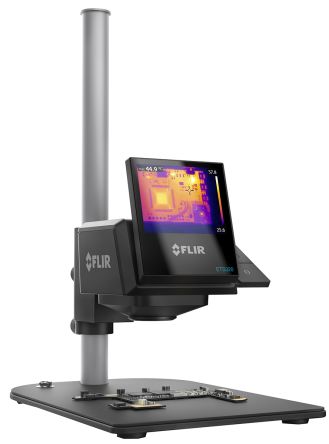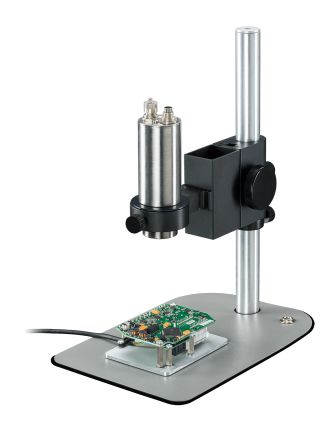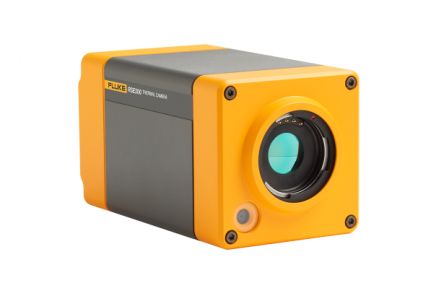- Automation & Control Gear
- Cables & Wires
- Enclosures & Server Racks
- Fuses & Circuit Breakers
- HVAC, Fans & Thermal Management
- Lighting
- Relays & Signal Conditioning
- Switches
- Batteries & Chargers
- Connectors
- Displays & Optoelectronics
- ESD Control, Cleanroom & PCB Prototyping
- Passive Components
- Power Supplies & Transformers
- Raspberry Pi, Arduino, ROCK, STEM Education & Development Tools
- Semiconductors
Thermal Imaging Cameras
Thermal imaging cameras are handheld non-contact devices used to capture detailed images in low-light and hard to see environments. They do this by detecting infrared energy (heat) and converting it into an image. Thermal cameras are used for troubleshooting, identifying potential hotspots and ensuring machinery and equipment runs correctly and efficiently.
RS Singapore offers a range of high-performance, state-of-the-art thermal imaging cameras and measurement equipment from industry-leading brands including FLIR, Fluke, Testo, and of course RS PRO.
RS also offers a calibration service if required. See more about ourcalibration services.
How Do Thermal Imaging Cameras Work?
Thermal imaging cameras are point-and-shoot devices that enable the user to see real-time in an infrared spectrum, interpreting temperature as colour. Warmer areas appear as red and yellow, and cooler areas as purple or blue. Thermal imaging cameras use an external lens to focus infrared energy to an internal thermal sensor. The sensor, along with processing electronics convert the heat and use the captured data to create images. Images can be used for immediate diagnosis or can be stored and processed through dedicated software for further evaluation.
What Do Thermal Imaging Cameras Detect?
Any object with a temperature above zero will give off thermal energy. The hotter an object is, the more thermal energy will be emitted. So, essentially thermographic cameras can detect anything that produces a heat signature.
What Are Thermal Cameras Used For?
The possibilities are endless! Thermal cameras were originally developed for military and surveillance operations, but now their useful technology enables the cameras to be used in a wide range of other applications. Some of the most common are:
- Electrical Engineering: Used to identify hotspots in electrical enclosures. Engineers can detect potential equipment failures caused by equipment overheating.
- Fire Service: Firefighters use thermal imagers to see through smoke and localise fire hotspots.
- Automotive Industry: Mechanics use thermal imaging cameras for engine diagnostics
- Medical: Doctors, nurses and vets can use cameras to detect fevers in human’s temperature or temperature differences in animals. This non-invasive method is especially useful for quick and accurate fever screening systems, which were notably used during the SARS outbreak to detect high body temperatures among large groups of people.
- Construction: Building inspectors use cameras and thermal images for checking insulation and for detecting leaks in heating systems. They are widely used in building surveying to identify structural issues, moisture intrusion, and energy loss.
- Wildlife Observation: Spot, track, and follow wildlife in their natural habitat regardless of lighting, weather, and outdoor conditions with thermal cameras. This application is invaluable for researchers and conservationists.
Types of Thermal Cameras
- Cooled Infrared Cameras: These thermal cameras utilise a cooling mechanism to enhance sensitivity and detect faint infrared signals more effectively. They are suitable for long-range detection, scientific research, and high-end industrial inspections, despite being more complex and expensive. Commonly used in applications requiring high precision, these thermal imaging devices offer superior image quality and are ideal for detailed analysis.
- Uncooled Infrared Cameras: These thermographic cameras operate without a cooling mechanism, making them more compact and affordable. They are ideal for building inspections, HVAC maintenance, and firefighting operations. Uncooled thermal cameras are widely used for general-purpose applications due to their portability and ease of use.
- Long-Wave Infrared (LWIR) Cameras: These cameras detect and visualise thermal radiation in the long-wave spectrum, providing valuable temperature data. Perfect for electrical inspections, building diagnostics, and veterinary medicine, LWIR thermal cameras and scanners offer good temperature resolution and are highly effective in various atmospheric conditions.
- Medium-Wave Infrared (MWIR) Cameras: Operating within the 3-5 µm wavelength range, these thermal imaging cameras offer good temperature and spatial resolution. They are suitable for high-temperature applications and gas leak detection in the oil and gas industry. MWIR thermal cameras are effective in detecting gas leaks and are essential for safety inspections in industrial settings.
- Short-Wave Infrared (SWIR) Cameras: Utilising shorter wavelengths, these thermal infrared cameras, sensors and scanners provide excellent spatial resolution and can see through certain materials like glass and plastics. Commonly used for solar panel inspections, food quality sorting, and in the semiconductor industry, SWIR thermal cameras offer unique capabilities for specialised applications and are one of the most accurate types of infrared thermal imaging tools in Singapore.
Buying Thermal Imaging Cameras: Ordering & Delivery
RS is a trusted supplier and distributor of thermal imaging and heat detector cameras and devices from leading brands. To place an order online, browse our extensive catalogue where you can filter and select your preferred products based on your specifications.
RS Singapore offers fast delivery of thermal imaging cameras. For more details on delivery services and fees, please refer to our Delivery Page.
Popular Searches
Related links
- Fluke Thermal Imaging Camera Thermal Imager Visor for Use with Ti200 Ti400
- FLIR Thermal Imaging Camera Thermal Imager Visor for Use with E30bx
- FLIR Thermal Imaging Camera Infrared Lens for Use with FLIR Exx...
- Thermal Imaging Camera Accessories
- FLIR Thermal Imaging Camera Infrared Lens for Use with E75 E95
- FLIR E96 24° Thermal Imaging Camera 640 x 480pixel Detector Resolution
- Testo 868s USB Micro-B Thermal Imaging Camera -30 → +100 °C, 160 x...
- Fluke TiS55+ Thermal Imaging Camera 256 x 192pixel Detector Resolution


